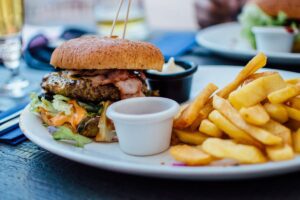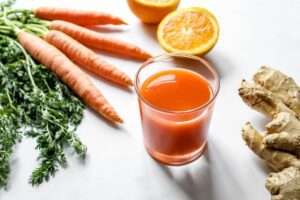

I’m Not Faking It—I’m Surviving It: Understanding Invisible Pain


Arya Soleil
Pain is one of the most isolating experiences a person can endure—especially when no one else can see it. For those of us living with chronic pain, autoimmune diseases, or invisible illnesses, it’s a daily battle that often goes unnoticed by the world. And that invisibility can feel like a double-edged sword.
When your pain doesn’t come with visible scars, casts, or bruises, it’s easy for others to dismiss it, question it, or misunderstand it. But let me say this loud and clear—I’m not faking it. I’m surviving it. My pain is real, even if you can’t see it. And if you’re reading this because you’ve felt the same way, know that you’re not alone.
The Burden of Invisible Pain
Living with pain that no one else can see creates layers of emotional exhaustion. You find yourself explaining, defending, and justifying your experience—often to people who mean well but just don’t get it.
The truth is, invisible illnesses don’t fit neatly into what most people expect pain to look like. There are no crutches to lean on, no bandages to explain the struggle, no outward signs of a condition that can turn even the smallest tasks into monumental challenges.
For many of us, this disconnect leads to feeling invalidated. Comments like:
- “You don’t look sick.”
- “But you seemed fine yesterday.”
- “You’re just overreacting.”
—can cut deeper than the pain itself. The constant need to prove your struggle can make you question your own reality. But let me remind you—your experience is valid. You don’t need anyone else to see your pain for it to be real.
Pain Isn’t Always Visible—But It’s Always Real
One of the hardest parts of living with invisible pain is feeling misunderstood. Conditions like fibromyalgia, arthritis, autoimmune disorders, and nerve damage don’t always show outward signs, yet they impact every corner of your life.
- Chronic fatigue makes it hard to get out of bed.
- Muscle aches feel like you’ve run a marathon—even when you haven’t moved much.
- Brain fog turns conversations and decisions into mountains you have to climb.
And yet, you push through. You show up. You do your best to keep life moving forward, even when your body is screaming at you to stop. That’s not weakness—it’s strength in its purest form.
The Emotional Weight of Pain
The physical pain is only part of the struggle. The emotional toll is just as heavy—if not heavier.
- Frustration: Feeling helpless when the pain flares up, no matter how much you’ve planned or prepared.
- Guilt: Canceling plans, missing work, or letting down loved ones because your body just can’t keep up.
- Isolation: Withdrawing from others because explaining your pain feels exhausting—and sometimes, you just can’t handle another “but you look fine” comment.
- Anxiety: Worrying about the next flare-up or how long the current one will last.
When you’re constantly fighting to keep your head above water, it’s easy to feel like you’re drowning. But the fact that you keep swimming? That’s survival. And it’s something to be proud of.
Advocating for Yourself—Even When It’s Hard
Surviving invisible pain means becoming your own advocate. It means setting boundaries, even if it’s uncomfortable. It means speaking up, even when others don’t understand.
- Communicate Honestly: Don’t minimize your pain to make others comfortable. Be clear about what you need, whether it’s rest, support, or space.
- Educate Others: Sometimes, people just don’t know what they don’t know. Share resources about your condition to help friends and family understand what you’re experiencing.
- Give Yourself Permission to Rest: You don’t have to justify rest. If your body needs a break, take it—without guilt.
- Seek Out Community: Find others who understand your struggle. Support groups, both online and in-person, can provide comfort, advice, and solidarity.
- Celebrate Your Wins: On days when just getting out of bed feels like an accomplishment, give yourself credit. Survival is a victory in itself.
What Healing Looks Like—Even Without a Cure
For many of us, healing doesn’t mean the absence of pain—it means learning how to carry it. It’s about making peace with the days that feel impossible and finding gratitude for the ones that feel lighter.
Healing also means focusing on what you can control—your diet, your movement, your mindset, and your ability to nourish yourself in ways that support your body.
- Eating anti-inflammatory foods to calm flare-ups.
- Practicing gentle yoga or stretches to ease stiffness.
- Prioritizing sleep and rest without guilt.
- Staying hydrated and supplementing with natural remedies to boost energy and balance hormones.
Small, intentional habits can create ripples of healing—even if the pain doesn’t disappear completely.
To Those Who Don’t Understand—Please Listen
If you’ve never experienced chronic pain, it can be hard to imagine what it’s like. But here’s what I’d want you to know:
- Believe Us: Just because you can’t see the pain doesn’t mean it’s not there. Trust what we tell you about our bodies.
- Be Patient: We might cancel plans or need more time to complete tasks—but it’s not because we don’t care. It’s because we’re managing a constant battle inside.
- Offer Support: Sometimes, the best thing you can do is simply ask, “How can I help?” Whether it’s dropping off a meal or just listening, small acts of kindness mean the world.
- Show Compassion: Pain is exhausting—physically, emotionally, and mentally. A little understanding can make all the difference.
Pain Doesn’t Define You—Strength Does
Living with invisible pain is an act of quiet courage. It forces you to adapt, push through, and survive—even on the hardest days.
To anyone who’s ever felt dismissed, doubted, or misunderstood because of their pain—this is your reminder: you are strong, and your pain is real.
You don’t have to prove it to anyone. Your experience doesn’t need validation to matter. Focus on what you need to heal and keep fighting for yourself. Whether it’s through food, rest, mindfulness, or movement—give your body the support it’s asking for.
Because you’re not faking it. You’re surviving it. And that’s more than enough.
Recommended Reads

- December 29, 2024
Check out 7 truths and myths about diet
Have you ever heard of some diet myths that...


- December 29, 2024
Is fasting really a good option? Check out the precautions of this eating style
Living in a society that is based on a...


- December 29, 2024
Start having healthy habits with these 7 benefits of a balanced diet!
If you want to live a quality life, you...


- December 29, 2024
Check out the list of 54 anti-inflammatory foods for your diet!
A balanced diet ensures all the nutrients possible for a routine...


- December 29, 2024
Find out how to cut back on sugar in your diet!
It’s very likely that at some point in your...


- December 29, 2024
What are the benefits of each vitamin in your body?
If your goal is to have a healthy routine and...

I’m Not Faking It—I’m Surviving It: Understanding Invisible Pain

Pain is one of the most isolating experiences a person can endure—especially when no one else can see it. For those of us living with chronic pain, autoimmune diseases, or invisible illnesses, it’s a daily battle that often goes unnoticed by the world. And that invisibility can feel like a double-edged sword.
When your pain doesn’t come with visible scars, casts, or bruises, it’s easy for others to dismiss it, question it, or misunderstand it. But let me say this loud and clear—I’m not faking it. I’m surviving it. My pain is real, even if you can’t see it. And if you’re reading this because you’ve felt the same way, know that you’re not alone.
The Burden of Invisible Pain
Living with pain that no one else can see creates layers of emotional exhaustion. You find yourself explaining, defending, and justifying your experience—often to people who mean well but just don’t get it.
The truth is, invisible illnesses don’t fit neatly into what most people expect pain to look like. There are no crutches to lean on, no bandages to explain the struggle, no outward signs of a condition that can turn even the smallest tasks into monumental challenges.
For many of us, this disconnect leads to feeling invalidated. Comments like:
- “You don’t look sick.”
- “But you seemed fine yesterday.”
- “You’re just overreacting.”
—can cut deeper than the pain itself. The constant need to prove your struggle can make you question your own reality. But let me remind you—your experience is valid. You don’t need anyone else to see your pain for it to be real.
Pain Isn’t Always Visible—But It’s Always Real
One of the hardest parts of living with invisible pain is feeling misunderstood. Conditions like fibromyalgia, arthritis, autoimmune disorders, and nerve damage don’t always show outward signs, yet they impact every corner of your life.
- Chronic fatigue makes it hard to get out of bed.
- Muscle aches feel like you’ve run a marathon—even when you haven’t moved much.
- Brain fog turns conversations and decisions into mountains you have to climb.
And yet, you push through. You show up. You do your best to keep life moving forward, even when your body is screaming at you to stop. That’s not weakness—it’s strength in its purest form.
The Emotional Weight of Pain
The physical pain is only part of the struggle. The emotional toll is just as heavy—if not heavier.
- Frustration: Feeling helpless when the pain flares up, no matter how much you’ve planned or prepared.
- Guilt: Canceling plans, missing work, or letting down loved ones because your body just can’t keep up.
- Isolation: Withdrawing from others because explaining your pain feels exhausting—and sometimes, you just can’t handle another “but you look fine” comment.
- Anxiety: Worrying about the next flare-up or how long the current one will last.
When you’re constantly fighting to keep your head above water, it’s easy to feel like you’re drowning. But the fact that you keep swimming? That’s survival. And it’s something to be proud of.
Advocating for Yourself—Even When It’s Hard
Surviving invisible pain means becoming your own advocate. It means setting boundaries, even if it’s uncomfortable. It means speaking up, even when others don’t understand.
- Communicate Honestly: Don’t minimize your pain to make others comfortable. Be clear about what you need, whether it’s rest, support, or space.
- Educate Others: Sometimes, people just don’t know what they don’t know. Share resources about your condition to help friends and family understand what you’re experiencing.
- Give Yourself Permission to Rest: You don’t have to justify rest. If your body needs a break, take it—without guilt.
- Seek Out Community: Find others who understand your struggle. Support groups, both online and in-person, can provide comfort, advice, and solidarity.
- Celebrate Your Wins: On days when just getting out of bed feels like an accomplishment, give yourself credit. Survival is a victory in itself.
What Healing Looks Like—Even Without a Cure
For many of us, healing doesn’t mean the absence of pain—it means learning how to carry it. It’s about making peace with the days that feel impossible and finding gratitude for the ones that feel lighter.
Healing also means focusing on what you can control—your diet, your movement, your mindset, and your ability to nourish yourself in ways that support your body.
- Eating anti-inflammatory foods to calm flare-ups.
- Practicing gentle yoga or stretches to ease stiffness.
- Prioritizing sleep and rest without guilt.
- Staying hydrated and supplementing with natural remedies to boost energy and balance hormones.
Small, intentional habits can create ripples of healing—even if the pain doesn’t disappear completely.
To Those Who Don’t Understand—Please Listen
If you’ve never experienced chronic pain, it can be hard to imagine what it’s like. But here’s what I’d want you to know:
- Believe Us: Just because you can’t see the pain doesn’t mean it’s not there. Trust what we tell you about our bodies.
- Be Patient: We might cancel plans or need more time to complete tasks—but it’s not because we don’t care. It’s because we’re managing a constant battle inside.
- Offer Support: Sometimes, the best thing you can do is simply ask, “How can I help?” Whether it’s dropping off a meal or just listening, small acts of kindness mean the world.
- Show Compassion: Pain is exhausting—physically, emotionally, and mentally. A little understanding can make all the difference.
Pain Doesn’t Define You—Strength Does
Living with invisible pain is an act of quiet courage. It forces you to adapt, push through, and survive—even on the hardest days.
To anyone who’s ever felt dismissed, doubted, or misunderstood because of their pain—this is your reminder: you are strong, and your pain is real.
You don’t have to prove it to anyone. Your experience doesn’t need validation to matter. Focus on what you need to heal and keep fighting for yourself. Whether it’s through food, rest, mindfulness, or movement—give your body the support it’s asking for.
Because you’re not faking it. You’re surviving it. And that’s more than enough.

Arya Soleil
More Topics


The Incredible Health Benefits of Cucumbers: Why This Hydrating Superfood Deserves More Attention

Is Eating Raw Food Really “Too Extreme”? Rethinking Health Before It’s Too Late

The Truth About Bacon: Is It Really Bad for You?

Why Grass-Fed Butter is Good for You

Top 4 Vitamins for Brain Health: Nourish Your Mind Naturally
Recommended Reads

- December 29, 2024
Check out 7 truths and myths about diet
Have you ever heard of some diet myths that...


- December 29, 2024
Is fasting really a good option? Check out the precautions of this eating style
Living in a society that is based on a...


- December 29, 2024
Start having healthy habits with these 7 benefits of a balanced diet!
If you want to live a quality life, you...


- December 29, 2024
Check out the list of 54 anti-inflammatory foods for your diet!
A balanced diet ensures all the nutrients possible for a routine...


- December 29, 2024
Find out how to cut back on sugar in your diet!
It’s very likely that at some point in your...


- December 29, 2024
What are the benefits of each vitamin in your body?
If your goal is to have a healthy routine and...

